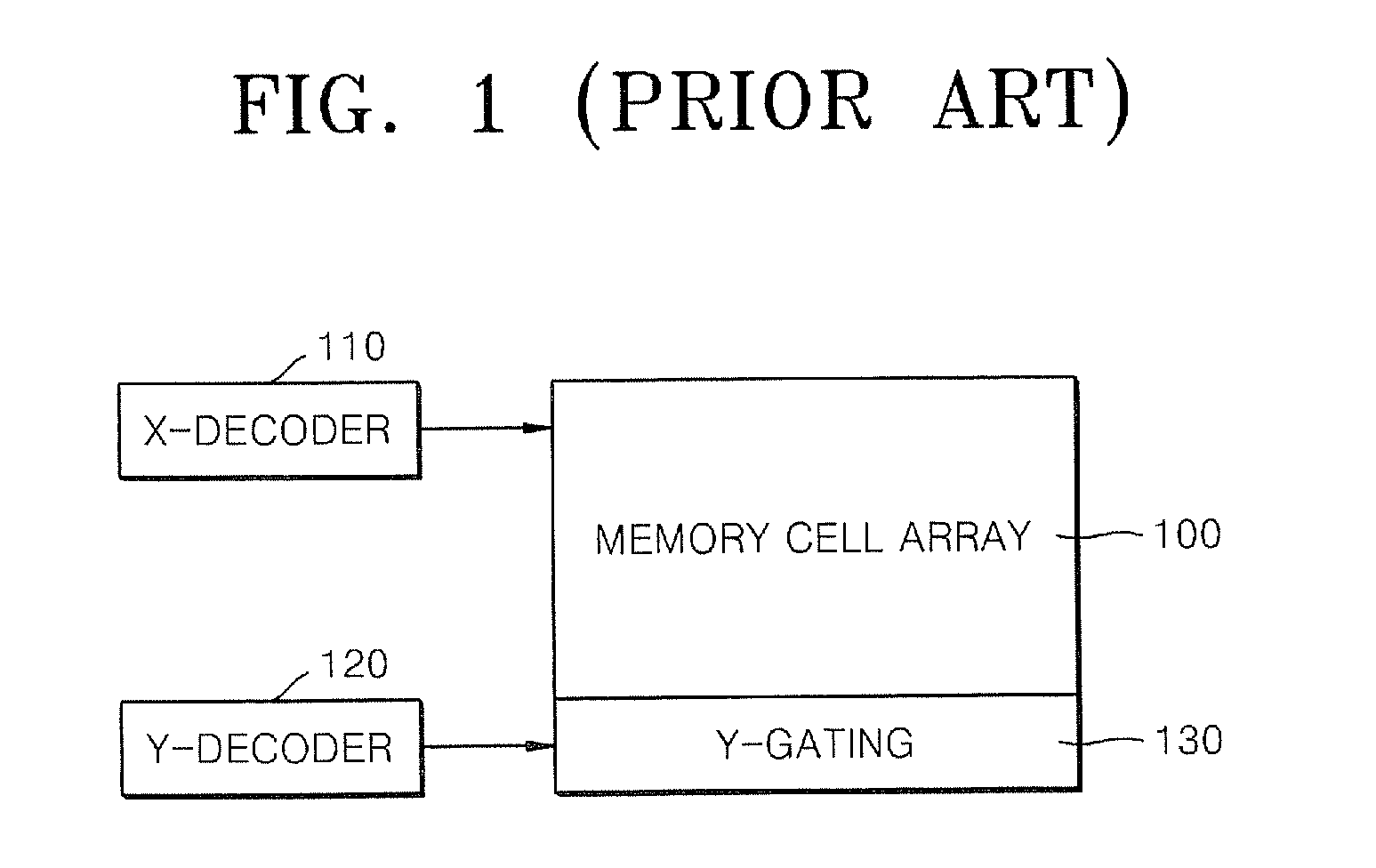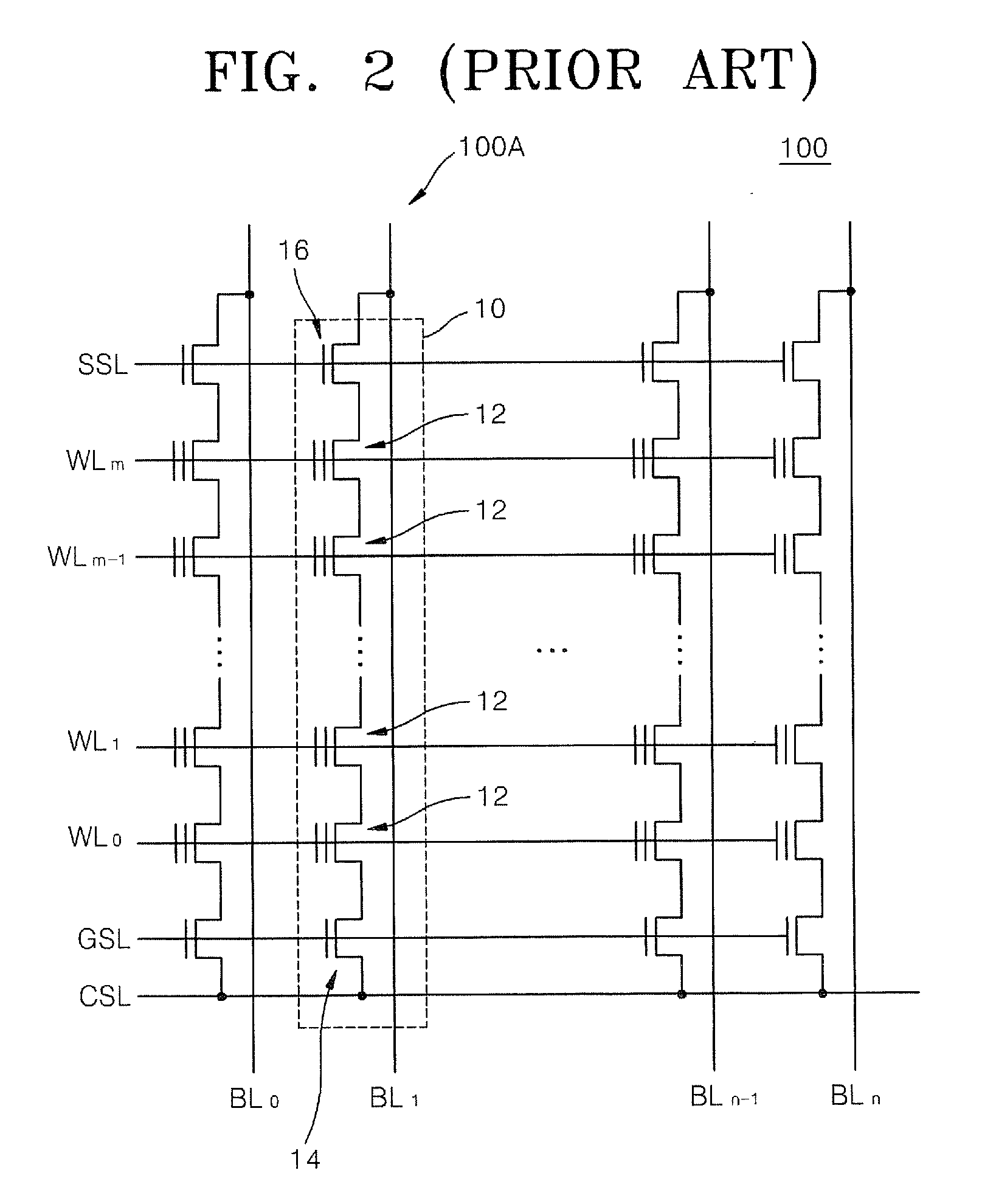Method of forming fine patterns of semiconductor device
a technology of semiconductor devices and fine patterns, applied in the field of semiconductor devices, can solve the problems of reducing complicated layout of the mask pattern for this trimming process, and requiring further reduction of the design rule of the nand flash memory device, so as to simplify the trimming process and remove unnecessary portions. , the effect of high density
- Summary
- Abstract
- Description
- Claims
- Application Information
AI Technical Summary
Benefits of technology
Problems solved by technology
Method used
Image
Examples
first embodiment
[0048]FIGS. 4A through 4K are cross-sectional views for explaining a method of forming fine patterns of the semiconductor device of FIG. 3, according to the present invention.
[0049]FIGS. 5A through 5F are plan views of layouts of a major part of the semiconductor device of FIG. 3, which is explained in processes of FIGS. 4A through 4K. FIGS. 5A through 5F illustrate only the single memory cell block 340 of FIG. 3.
[0050]FIGS. 4A through 4K illustrate cross-sections taken along lines A-A′, B-B′, C-C′, and D-D′ of FIG. 3, according to a process sequence. In FIGS. 4A through 4K and FIGS. 5A through 5F, the same reference characters as those of FIG. 3 denote like elements, and thus their description will be omitted. In FIGS. 4A through 4K, the memory cell region 300A is represented as “CELL”, the contact region 300B is represented as “CONTACT”, and the peripheral circuit region 300C is represented as “PERI”.
[0051]Referring to FIGS. 4A and 5A, first, a substrate 500, for example, a silico...
second embodiment
[0084]FIGS. 6A through 6F are cross-sectional views for explaining a method of forming fine patterns of the semiconductor device of FIG. 3, according to the present invention.
[0085]In FIGS. 6A through 6F, the same reference characters as those of FIGS. 3, 4A through 4K, and 5A through 5F denote like elements, and thus their description will be omitted.
[0086]Referring to FIG. 6A, in a method as described above with reference to FIGS. 4A, 5A, and 4B, the conductive layer 530, the first hard mask layer 532, and the second hard mask layer 534 are sequentially formed on the substrate 500, and the mold mask patterns 540 and the mask layer 550 are then formed on the second hard mask layer 534.
[0087]Thereafter, the gap-fill protection film 560 is formed on the mask layer 550.
[0088]The gap-fill protection film 560 may be formed according to a process similar to that described above with reference to FIG. 4D. In other words, the gap-fill protection film 560 may be formed to completely cover t...
third embodiment
[0103]FIGS. 7A and 7B are cross-sectional views for explaining a method of forming fine patterns of the semiconductor device of FIG. 3, according to the present invention.
[0104]In FIGS. 7A and 7B, the same reference characters as those of FIGS. 3, 4A through 4K, 5A through 5F, and 6A through 6F denote like elements, and thus their description will be omitted.
[0105]Referring to FIG. 7A, in a method similar to that described above with reference to FIGS. 6A through 6D, the conductive layer 530, the first hard mask layer 532, and the second hard mask layer 534 are sequentially formed on the substrate 500, and a plurality of butted mask pattern pairs 550b are then formed on the second hard mask layer 534.
[0106]Thereafter, the butted mask pattern pairs 550b are entirely etched back until the horizontal extensions 550h of the butted mask pattern pairs 550b are completely removed. Thus, portions of the upper surface of the second hard mask layer 534, which are located below the horizontal ...
PUM
| Property | Measurement | Unit |
|---|---|---|
| temperature | aaaaa | aaaaa |
| temperature | aaaaa | aaaaa |
| temperature | aaaaa | aaaaa |
Abstract
Description
Claims
Application Information
 Login to View More
Login to View More - R&D
- Intellectual Property
- Life Sciences
- Materials
- Tech Scout
- Unparalleled Data Quality
- Higher Quality Content
- 60% Fewer Hallucinations
Browse by: Latest US Patents, China's latest patents, Technical Efficacy Thesaurus, Application Domain, Technology Topic, Popular Technical Reports.
© 2025 PatSnap. All rights reserved.Legal|Privacy policy|Modern Slavery Act Transparency Statement|Sitemap|About US| Contact US: help@patsnap.com



